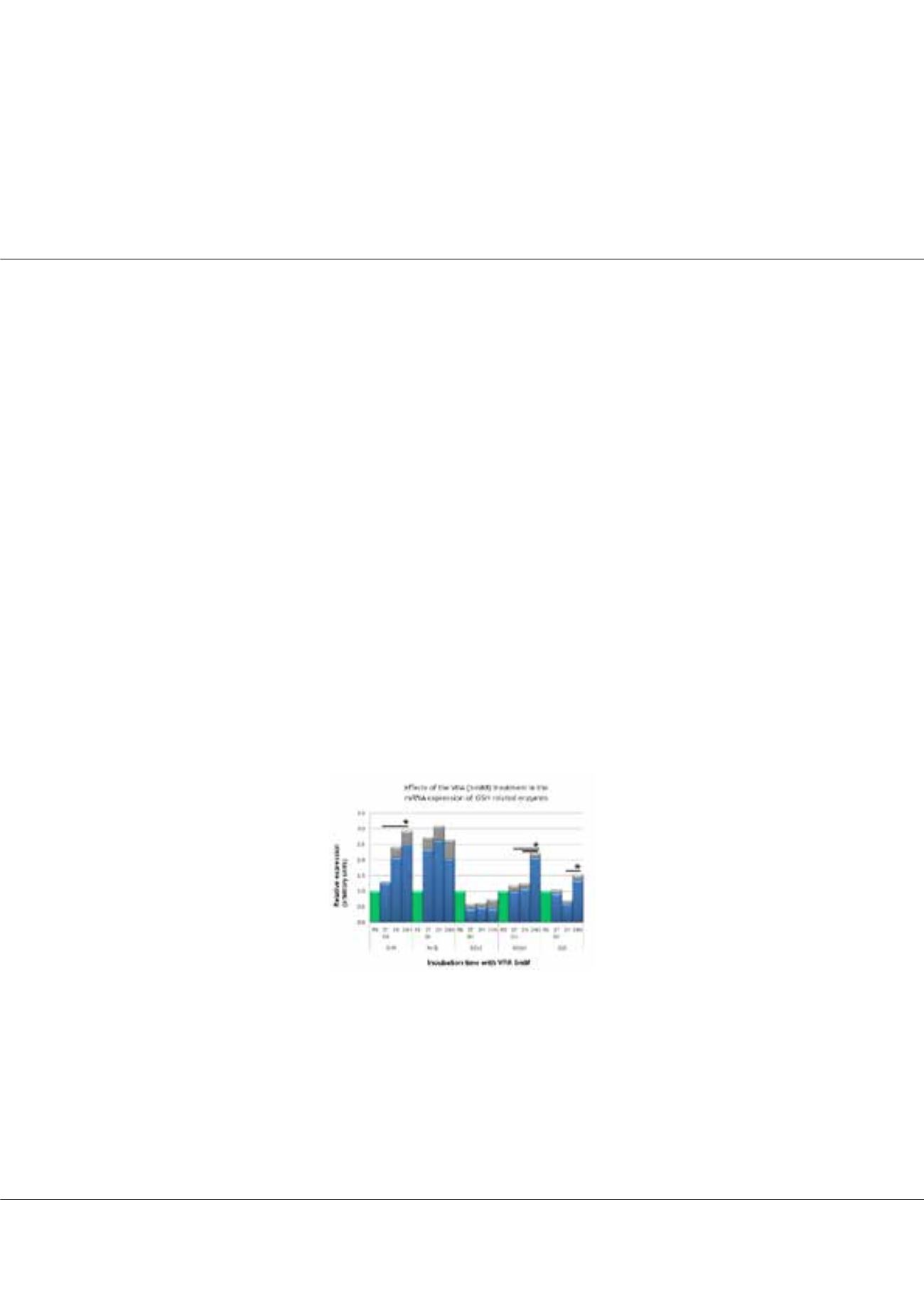

Page 92
conferenceseries
.com
Volume 3, Issue 4
J Clin Epigenet
ISSN: 2472-1158
Epigenetics 2017
November 06-08, 2017
EPIGENETICS & CHROMATIN
November 06-08, 2017 | Frankfurt, Germany
2
nd
International Congress on
mRNA expression of the glutathione related genes in cultured HeLa cells treated with valproic acid
Benjamin Gonzalez Lopez
Escuela Superior de Medicina, Mexico
Statement of the Problem
: The greatest challenge for anticancer therapy is the tendency of malignant cells to develop
multidrug resistance (MDR). This phenomenon is manifested as a decrease in drug uptake, an increase in drug efflux by
ABC transporters, and the activation of detoxification systems (phase II metabolism, the glutathione system), among other
mechanisms of the MDR phenotype. Recently, a new group of anticancer drugs known as epigenetic agents, histone deacetylase
inhibitors (HDACIs), has shown better clinical results. They are more specific and less toxic, and are capable of sensitizing
malignant cells to conventional anticancer drugs. However, HDACIs have also proven to induce the MDR phenotype. Since
glutathione (GSH) is the main detoxification system present in all tissues, the present study focuses on the relation between
treatment with valproic acid (an epigenetic drug) and the expression of GSH-related genes in HeLa cell cultures.
Methodology & Theoretical Orientation
: Firstly, the molecular analysis of mRNA expression was made by standard PCR,
using the total RNA obtained from Hela cells. Then reverse transcription to cDNA was performed and a viability assay was
made by using the MTT protocol to evaluate the effects of VPA and BSO (Buthionine sulfoximine), alone or in combination.
The second step was to measure the level of intracellular GSH, previously exposing the cells to treatment with VPA and BSO.
Findings
: A significant increase was found in the mRNA expression of the glutamate-cysteine ligase modifier subunit (GCLM)
and glutathione synthase (GSS). The MTT assay showed a decrease in cell viability with the use of VPA and even more so with
the combination of VPA+BSO. The measurement and analysis of variation in the level of GSH is still in progress.
Conclusion & Significance
: The induction of MDR by VPA can be considered as mild. This agent may be useful in the
treatment of tumors because it can induce death in cancer cells, alone or in combination with BSO or other anticancer drugs.
Further studies are necessary to analyze the level of proteins participating in glutathione biosynthesis and recycling after VPA
treatment.
Figure 1: Effects of the VPA (5 mM) treatment in the mRNA expression of GSH related enzymes along time. Relative expression is shown in the y axis. Ribosomal
RNA was used as positive control (green), comparisons were made between time zero, 2 and 24 hours of VPA exposition.
Recent Publication
1. Papanikolopoulou A, Syrigos KN and Nikolaos Drakoulis (2015) The role of glutamine supplementation in thoracic
and upper aerodigestive malignancies. Nutrition and Cancer. 67(2):231-237.
2. Gul K, Muge A, Taner A, et al (2015) Oral glutamine supplementation reduces radiotherapy- induced esophagitis in
lung cancer patients. Asian Pac J Cancer Prev. 16(1):53-58.
Benjamin Gonzalez Lopez, J Clin Epigenet 2017, 3:4
DOI: 10.21767/2472-1158-C1-003
















